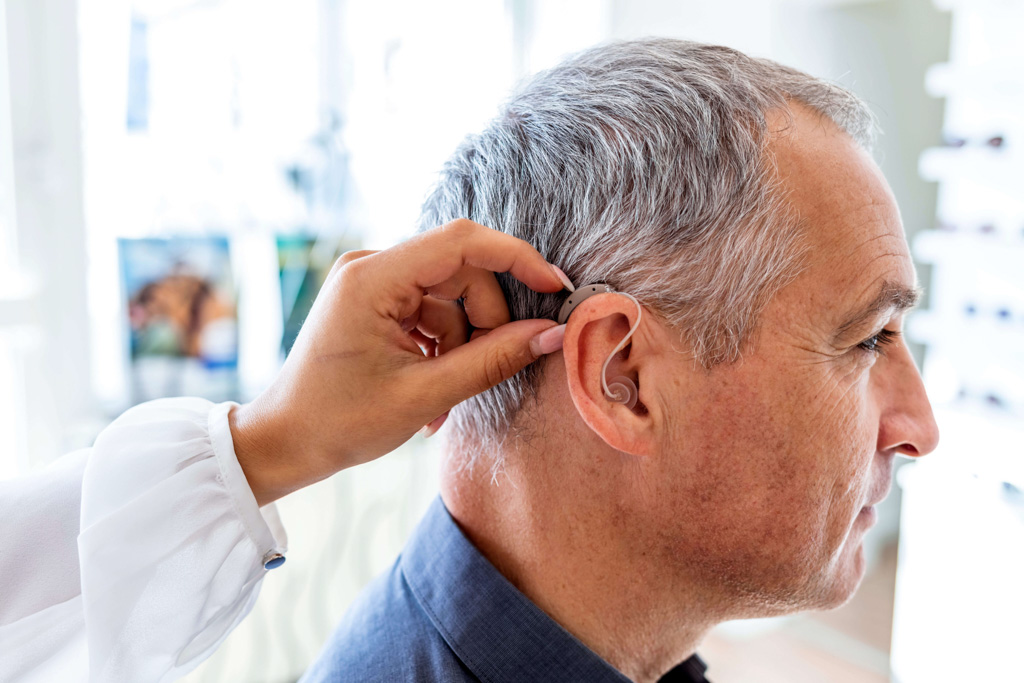Hearing Aid Fitting
Once the best type of hearing aid has been selected to meet your specific needs, the next steps are ensuring it fits properly and comfortably and then learning how to use and care for it.
For an In-the-Ear hearing aid, the hearing care professional will adjust the device to make sure it fits properly in the ear and make any adjustments to ensure the earmould is tightly fitted. For a Behind-the-Ear hearing aid, it’s important that the unit and wire sit comfortably on the back part of the ear.
Besides learning about the technical features and functionality of the hearing aid, our hearing care professionals will demonstrate how to:
• properly care for and maintain the device
• remove any earwax and debris
• change the batteries
• charge the device

Programming
As hearing aids are customized to fit your ear, so too is the programming involved. Even if two people experience the same level of hearing loss, their devices are most likely programmed entirely differently. Programming needs to be done by a hearing care professional and should not be attempted by DIYers. Given the hardware, software, and complex functionality involved, the process requires the knowledge and expertise that only years of training can provide; otherwise, your device will be ineffective and not perform to meet your specific needs
What’s involved with hearing aid programming?
After you’ve found the best hearing aid to meet your needs, fine-tuning it to deliver the best listening experience is the next step. And just as hearing aids themselves have come a long way over the years, so has the programming technology - both noise and feedback have been reduced significantly with these new developments.
At Clarity HiFi, we use the latest technology available called real-ear measurements (REM) to measure the sound pressure level in a patient's ear canal when a hearing aid is worn. REM ensures that we achieve the best hearing improvement possible with the goal of getting as close as possible to 100%, although it is dependent on level of hearing loss. During the fitting process, a thin probe microphone is inserted into the ear canal alongside the hearing aid. While the patient listens to recorded speech samples, sound levels are precisely measured. Based on the findings, our hearing care professional can then adjust these sound levels to better match target amplification levels.
Programming involves:
- Real noise simulation through use of surround sound
- Real-ear probe microphones
- Visible speech mapping
Some of the key factors that can be adjusted include:
- Noise reduction
- Background noise emphasis
- Overall comfort
- Frequency
- Intensity levels
- Compression ratios
- Power outputs
Can hearing aids be reprogrammed?
While our hearing care professionals will endeavour to program your hearing aid to deliver the best experience, there are times when tweaks may be required. You may find that it seemed to work perfectly while at Clarity HiFi, but after spending a few weeks in the real world, you think some fine-tuning might be necessary. If this is the case, please return to Clarity HiFi and we can make any necessary adjustments.
Another reason reprogramming may be required is that hearing needs can change over time. Hearing loss is not a static condition, so some of the factors involved may need to be tweaked to meet your new requirements. Scheduling regular appointments with our hearing care professionals allows us to assess and monitor any hearing loss changes.


